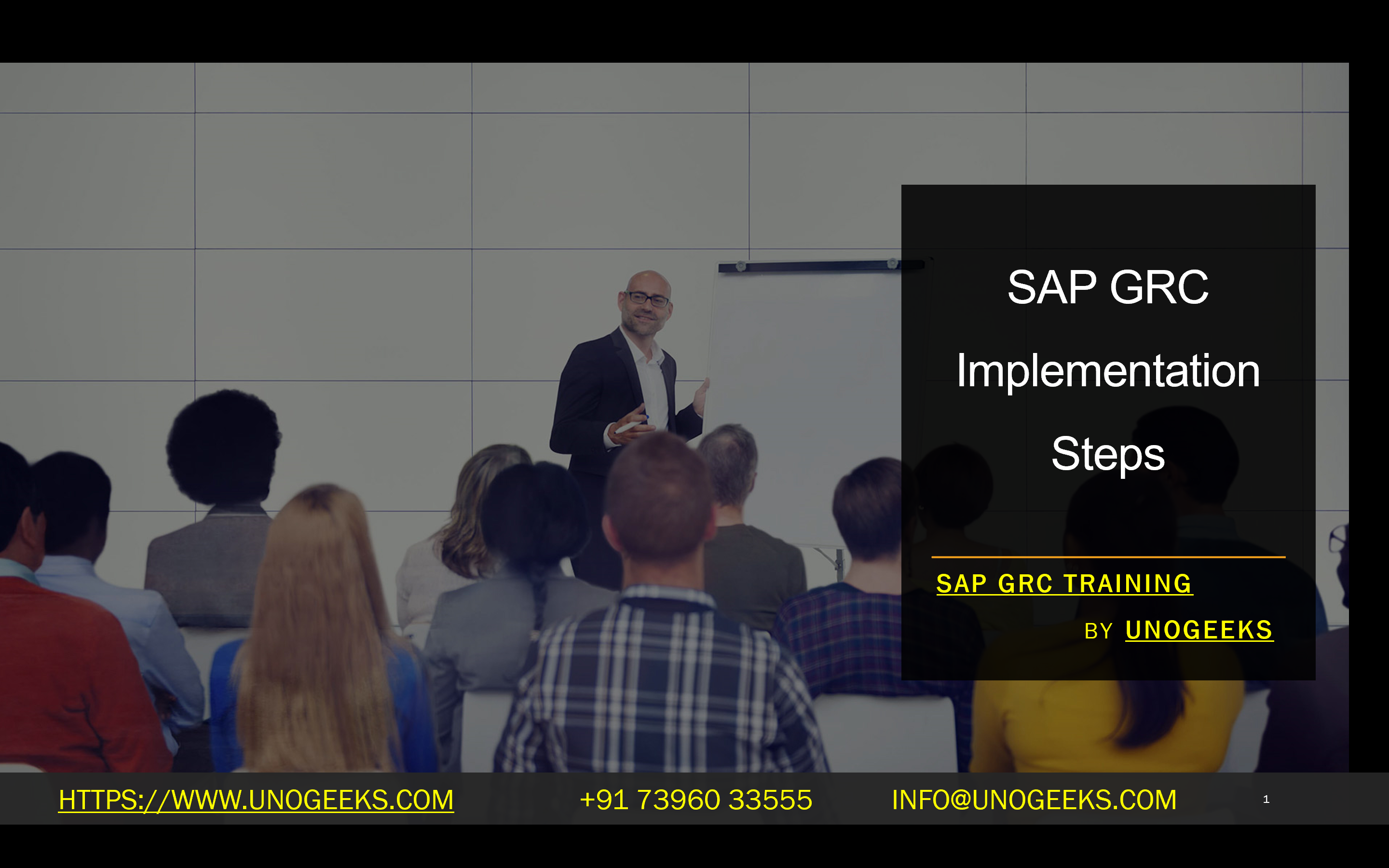SAP GRC Implementation Steps
SAP GRC Implementation: A Roadmap for Success
SAP Governance, Risk, and Compliance (GRC) solutions are indispensable in modern businesses seeking to streamline compliance, effectively manage risks, and enhance operational efficiency. If your organization is considering an SAP GRC implementation, having a well-structured plan is vital. Here’s a comprehensive guide to ensure a smooth and successful implementation.
Key SAP GRC Implementation Phases
1. Project Preparation and Planning
- Define Scope and Objectives: Clearly articulate the business needs driving the GRC implementation. Establish the specific modules (e.g., Access Control, Risk Management, Process Control) and compliance frameworks (SOX, GDPR, etc.) that will be addressed.
- Form a Project Team: Assemble a cross-functional team comprising business process owners, IT experts, GRC specialists, and critical stakeholders.
- Choose an Implementation Partner: Evaluate potential SAP partners based on expertise, experience, and industry relevance. Collaborating with a knowledgeable partner can significantly improve the implementation process.
- Develop a Project Plan: Create a detailed roadmap outlining timelines, milestones, resource allocation, and a communication strategy to keep all parties informed.
2. Business Blueprint
- Process Mapping: Meticulously document existing business processes and identify areas where GRC solutions will integrate. Focus on workflows related to access management, risk assessments, and compliance audits.
- Risk and Control Identification: Conduct a thorough analysis to pinpoint potential risks that could disrupt operations. Build a comprehensive risk catalog and align it with corresponding controls for mitigation.
- Gap Analysis: Assess any discrepancies between the current processes and the desired state enabled by the SAP GRC solution. This highlights areas needing customization and configuration.
3. Realization
- System Configuration: Configure SAP GRC modules based on the specifications defined in the blueprint phase. This involves setting up roles, workflows, rule sets, and risk matrices.
- Customization: If needed, tailor the solution through custom code or configurations to address unique business requirements that the standard solution might not cover.
- Integration: Establish seamless integration of SAP GRC with your existing business systems (ERP, HR, etc.) to ensure smooth data flow and avoid redundancy.
4. Final Preparation
- Data Migration: Accurately migrate master and essential historical data from legacy systems (if applicable) into the new SAP GRC environment.
- Testing: Rigorously test all scenarios, including user access, risk analysis, reporting, and compliance workflows. Thorough testing will identify any issues before they go live.
- User Training: Provide comprehensive training to end users and administrators. Create user guides and conduct hands-on sessions to ensure optimal tool adoption.
5. Live and Support
- Production Rollout: Meticulously transition to the live SAP GRC environment. Schedule go-live to minimize potential business disruption.
- Monitoring and Optimization: Regularly monitor the system’s performance, fine-tune configurations, and address any issues.
- Change Management As business processes evolve, adapt your SAP GRC configuration accordingly. Continually train new users and provide updates to existing users as needed.
Critical Success Factors
- Executive Sponsorship: Secure strong leadership support for the project to ensure alignment and the prioritization of resources.
- Communication and Collaboration: Maintain open lines of communication between business units and the implementation team to ensure that the project aligns with evolving requirements.
- User Adoption: Invest in thorough training and support resources to help users successfully transition to the new system.
In Conclusion
Implementing SAP GRC can offer your organization considerable benefits across risk mitigation, compliance assurance, and process efficiency. By following these steps and keeping a keen eye on success factors, you’ll put your organization on the path toward maximizing the value of your SAP GRC investment.
Conclusion:
Unogeeks is the No.1 IT Training Institute for SAP GRC Training. Anyone Disagree? Please drop in a comment
You can check out our other latest blogs on SAP GRC here – SAP GRC Blogs
You can check out our Best In Class SAP GRC Details here – SAP GRC Training
Follow & Connect with us:
———————————-
For Training inquiries:
Call/Whatsapp: +91 73960 33555
Mail us at: info@unogeeks.com
Our Website ➜ https://unogeeks.com
Follow us:
Instagram: https://www.instagram.com/unogeeks
Facebook: https://www.facebook.com/UnogeeksSoftwareTrainingInstitute
Twitter: https://twitter.com/unogeeks
